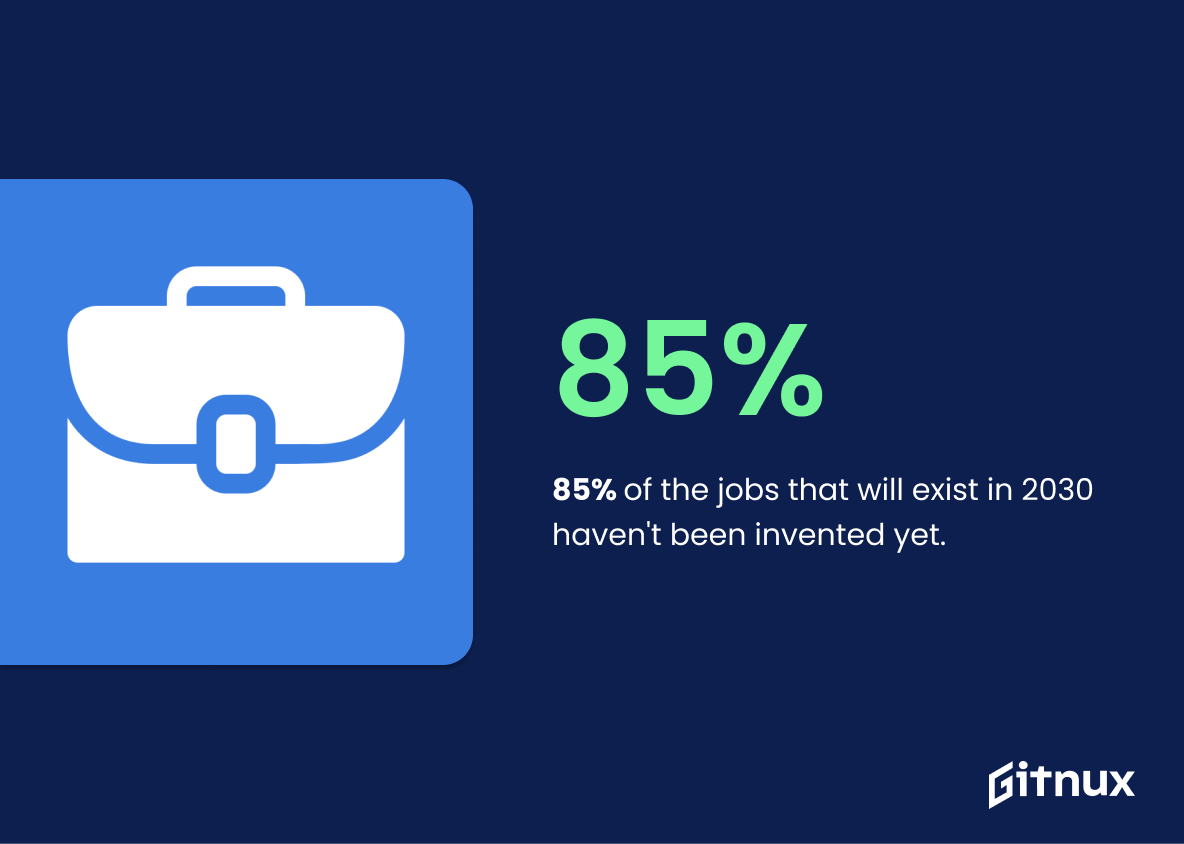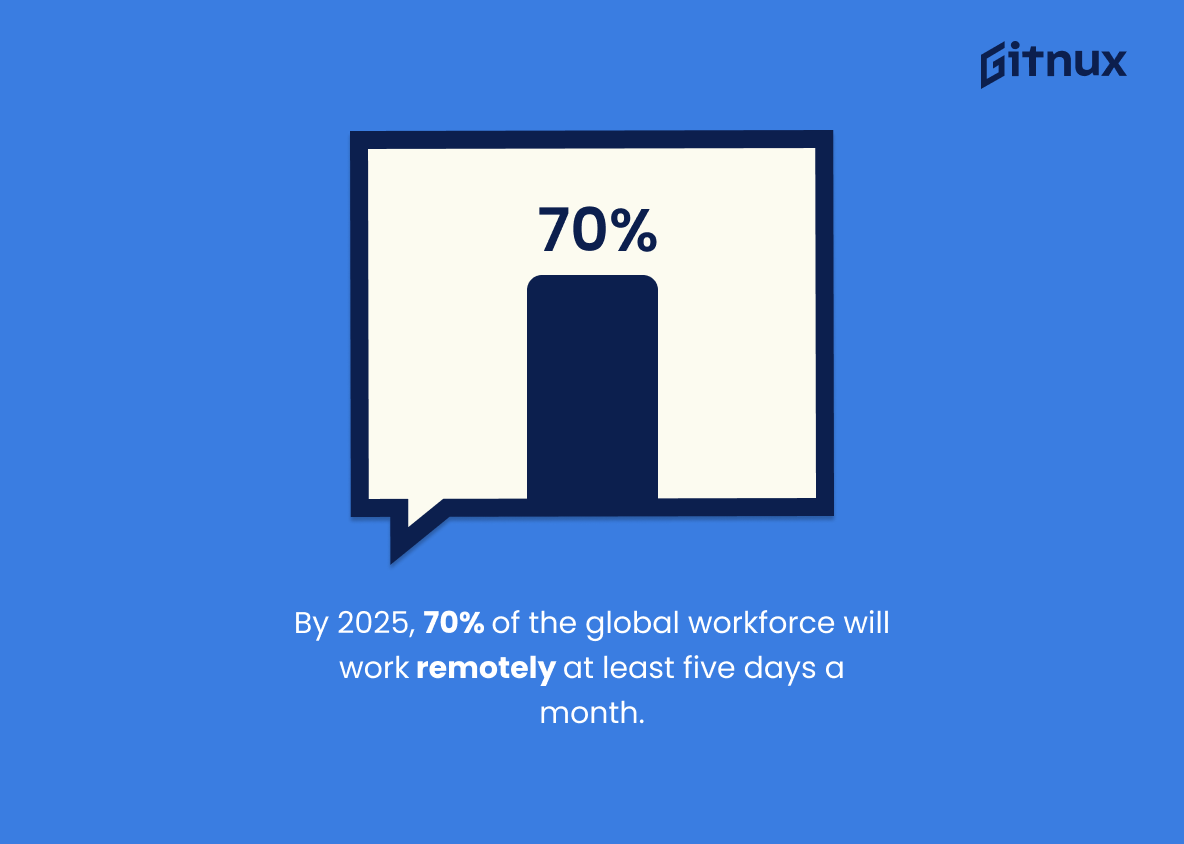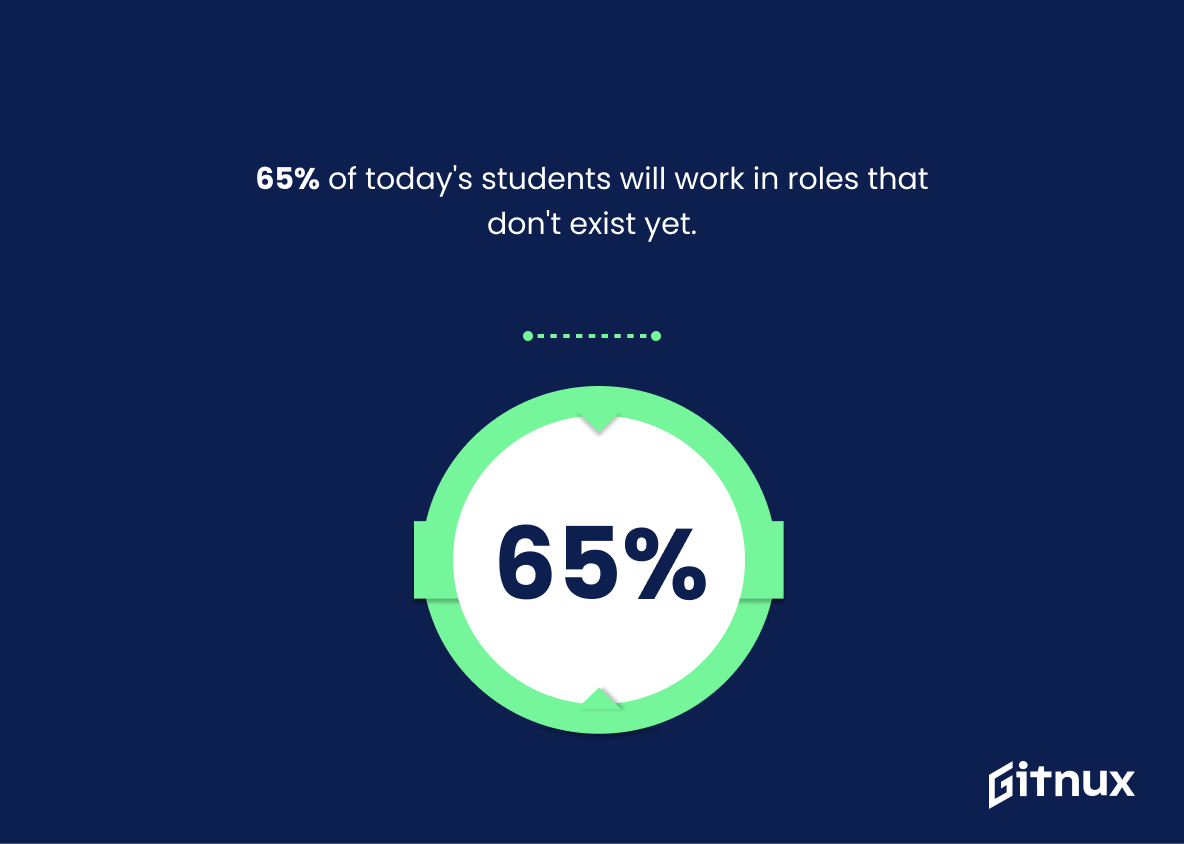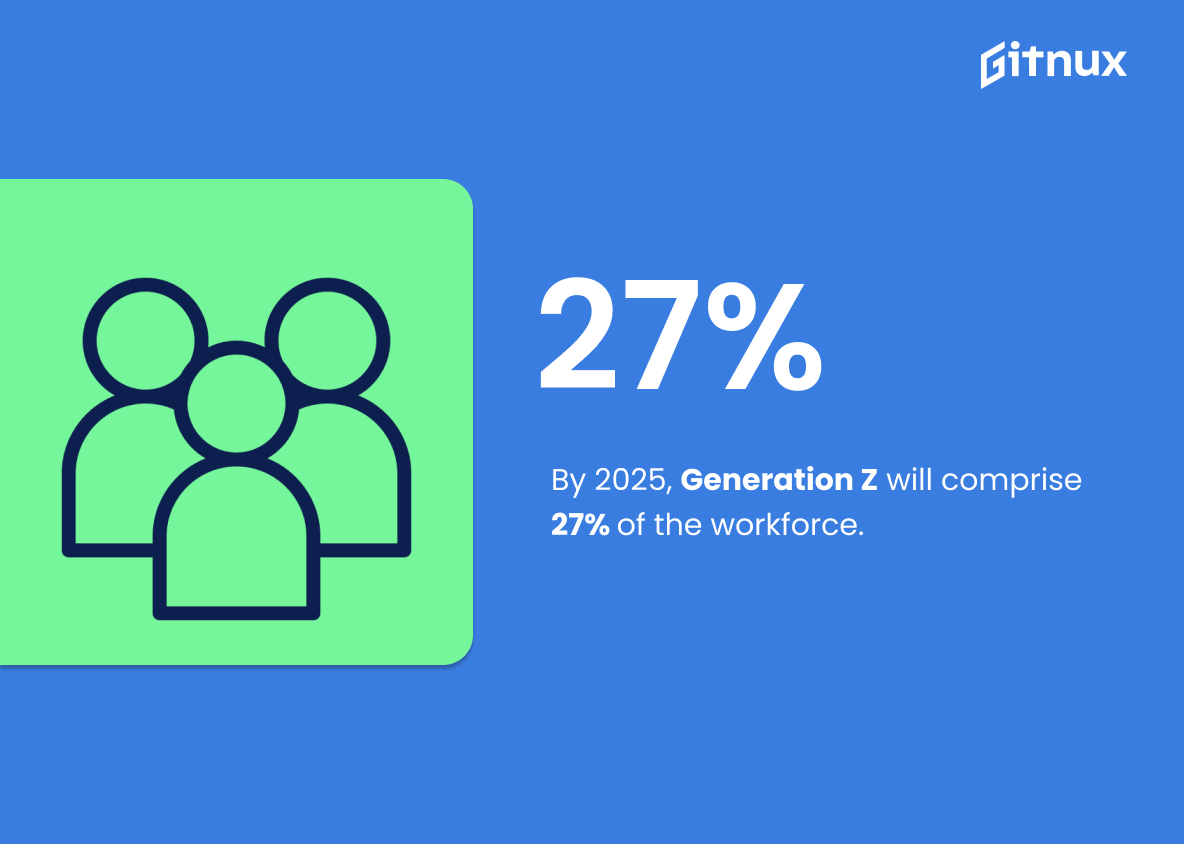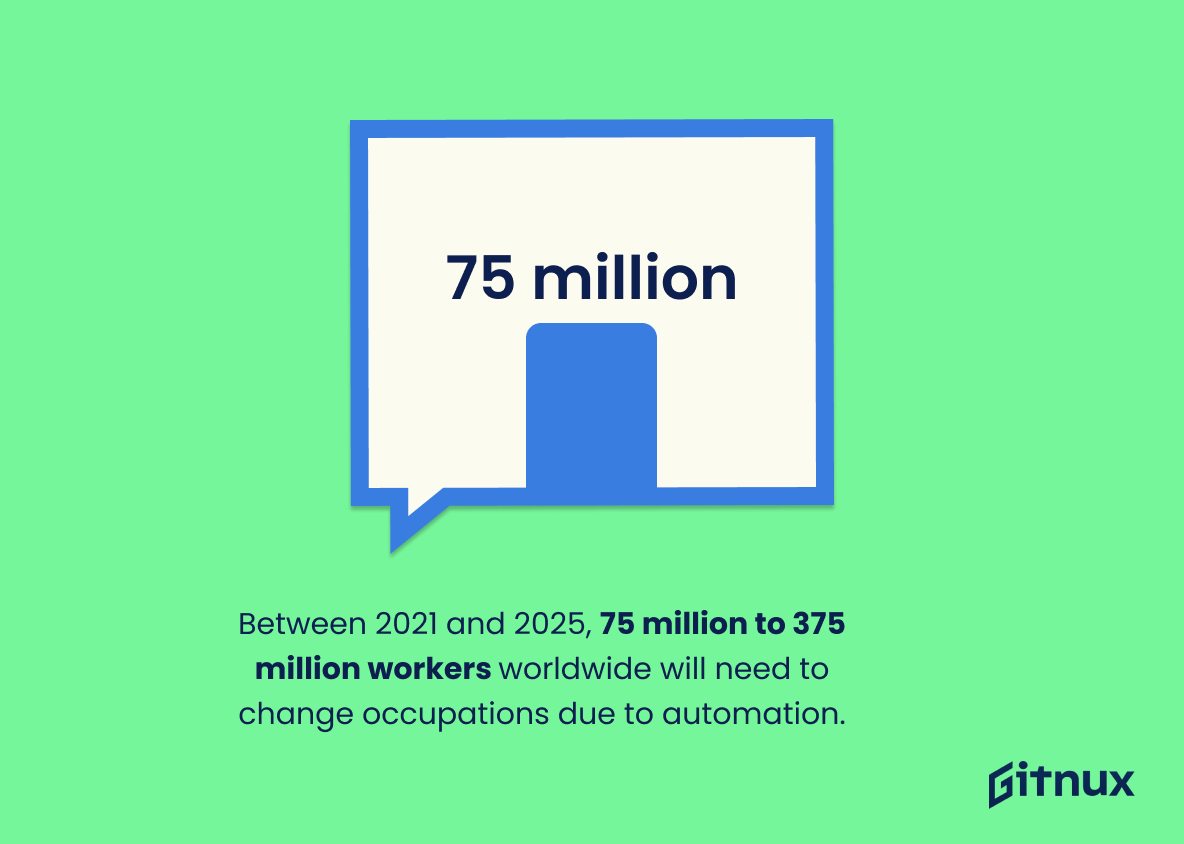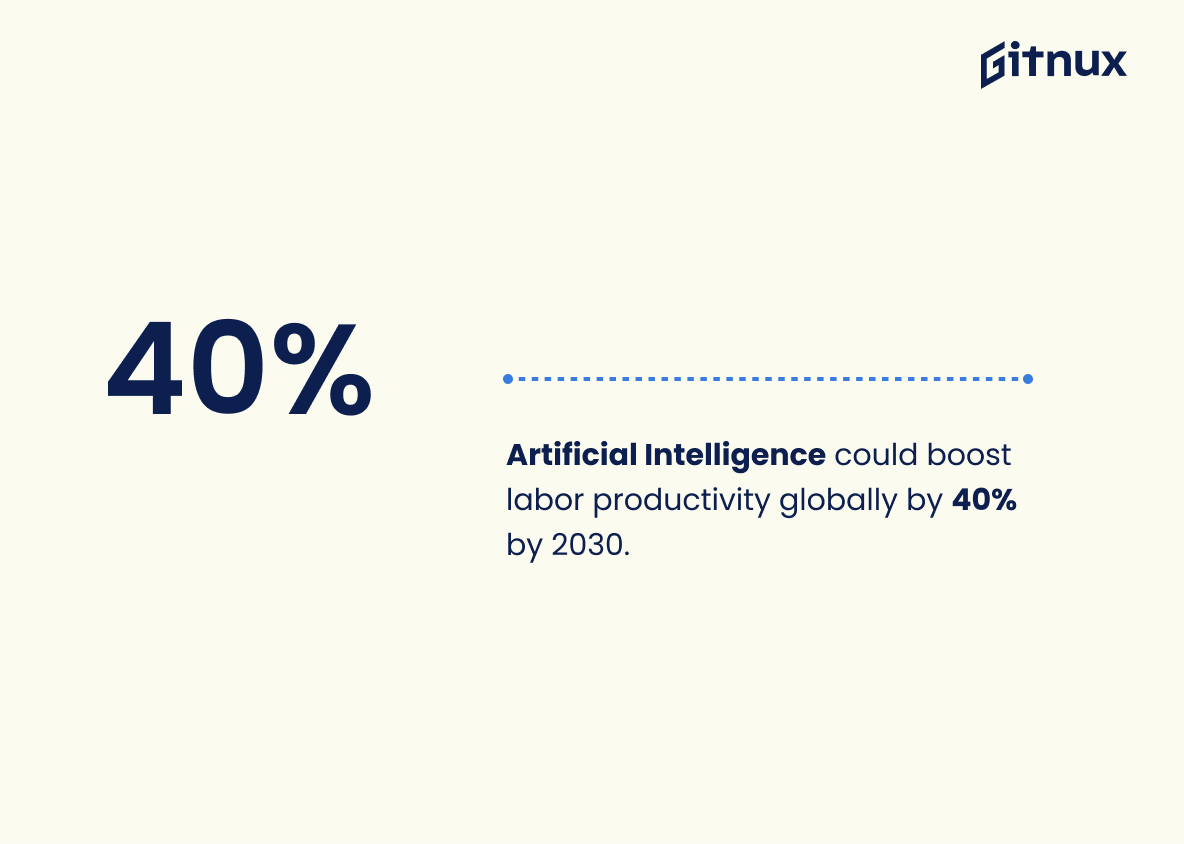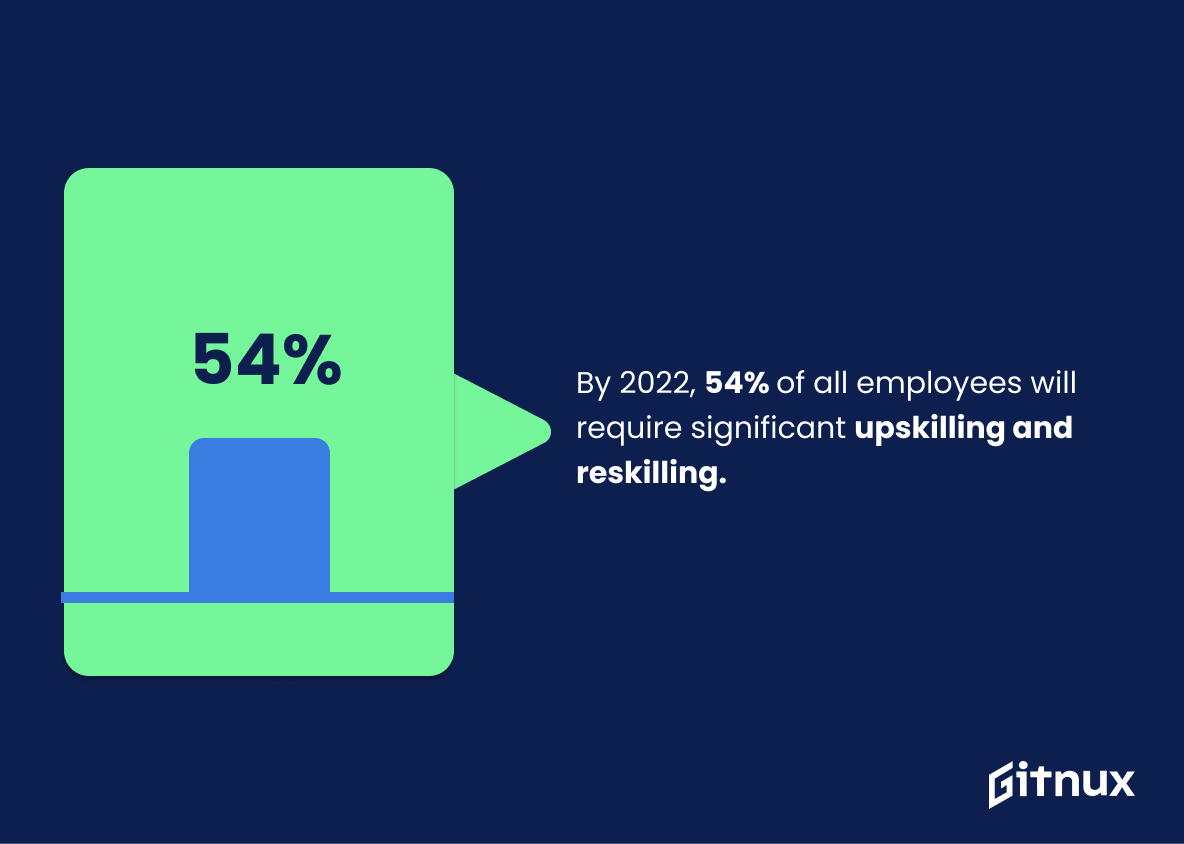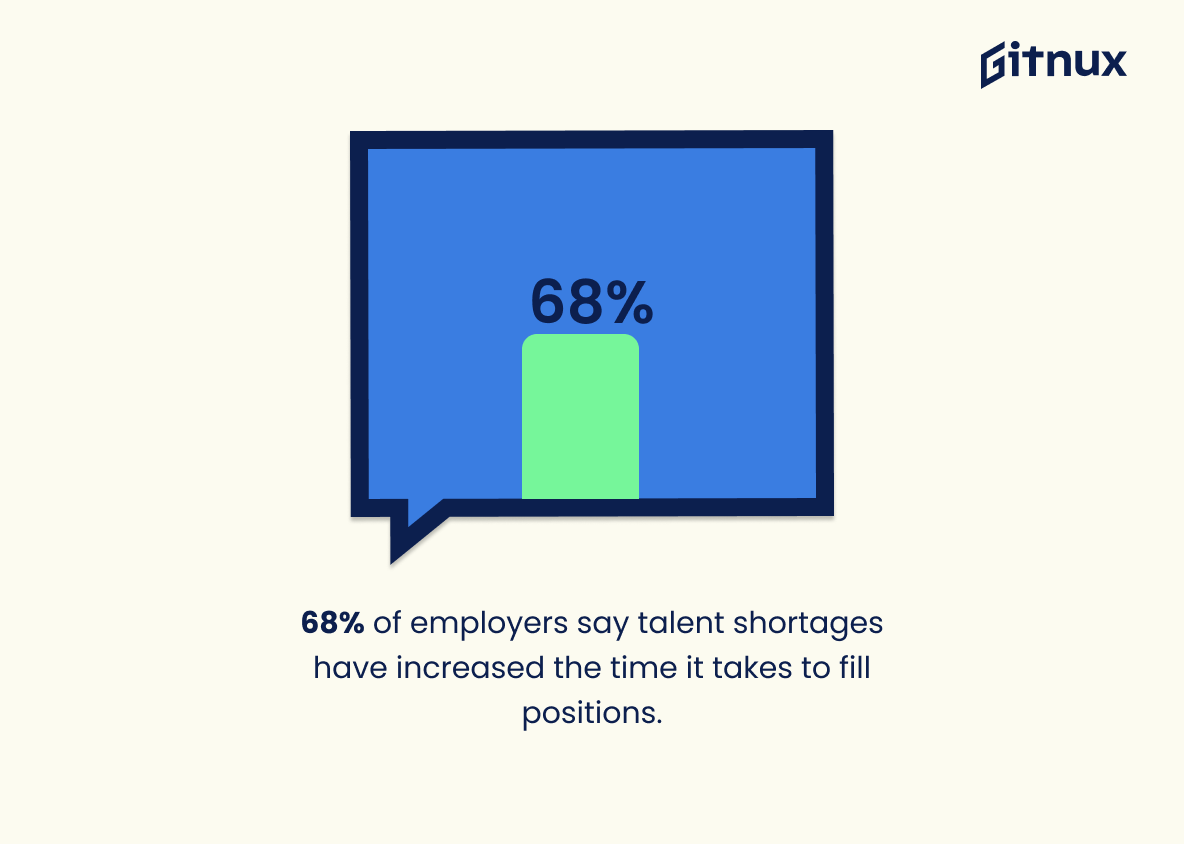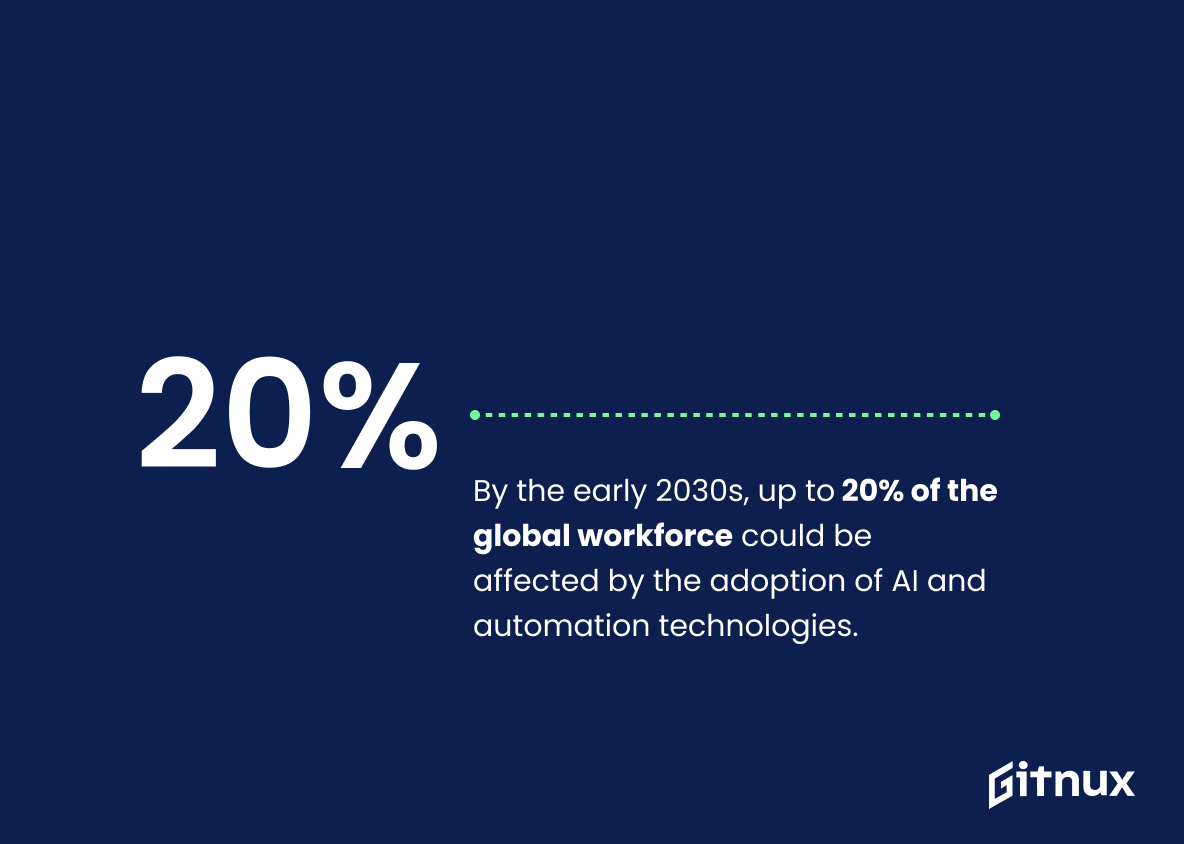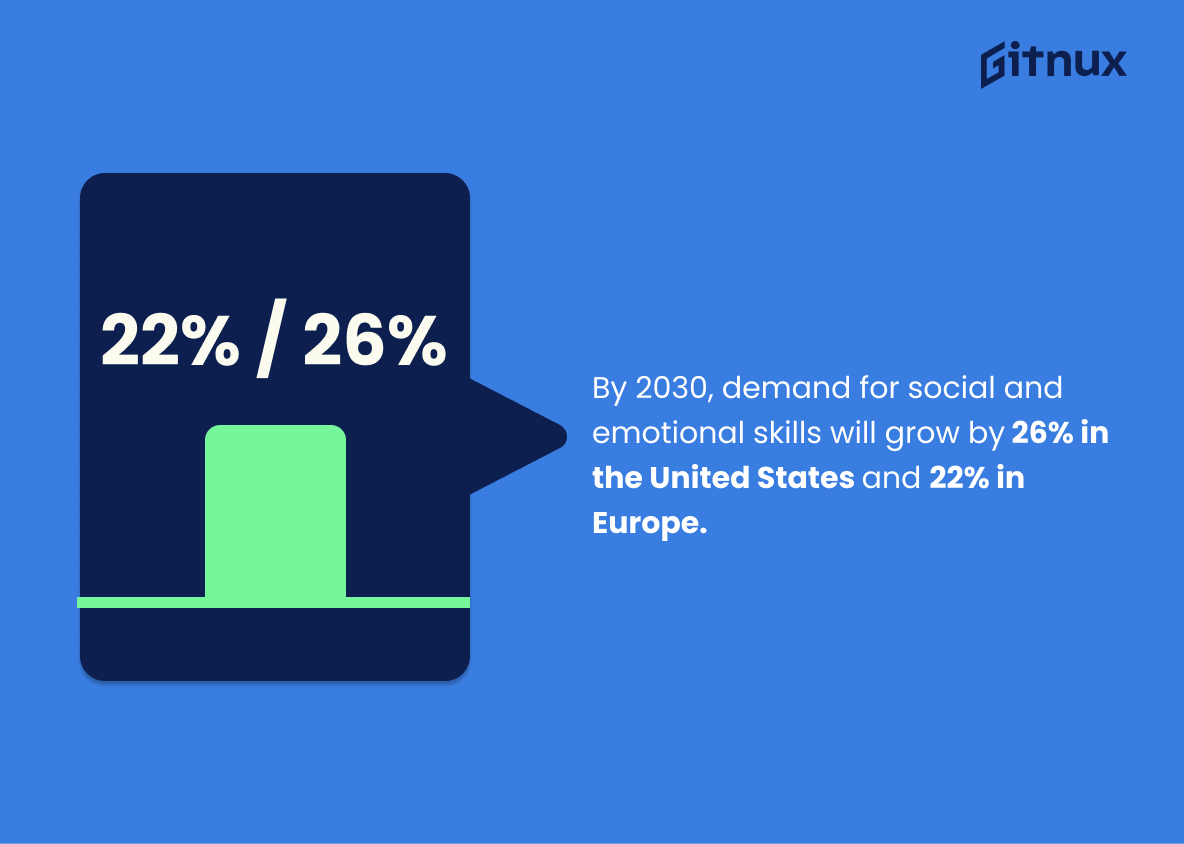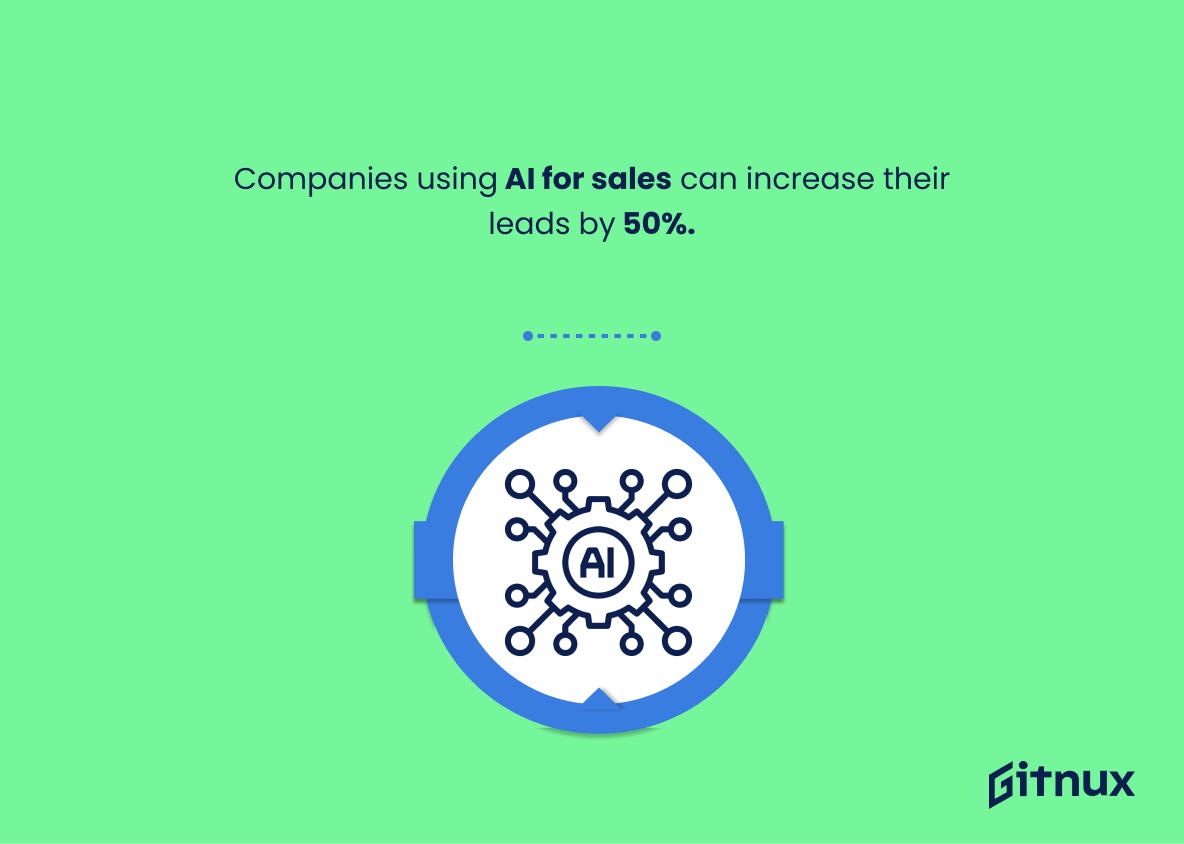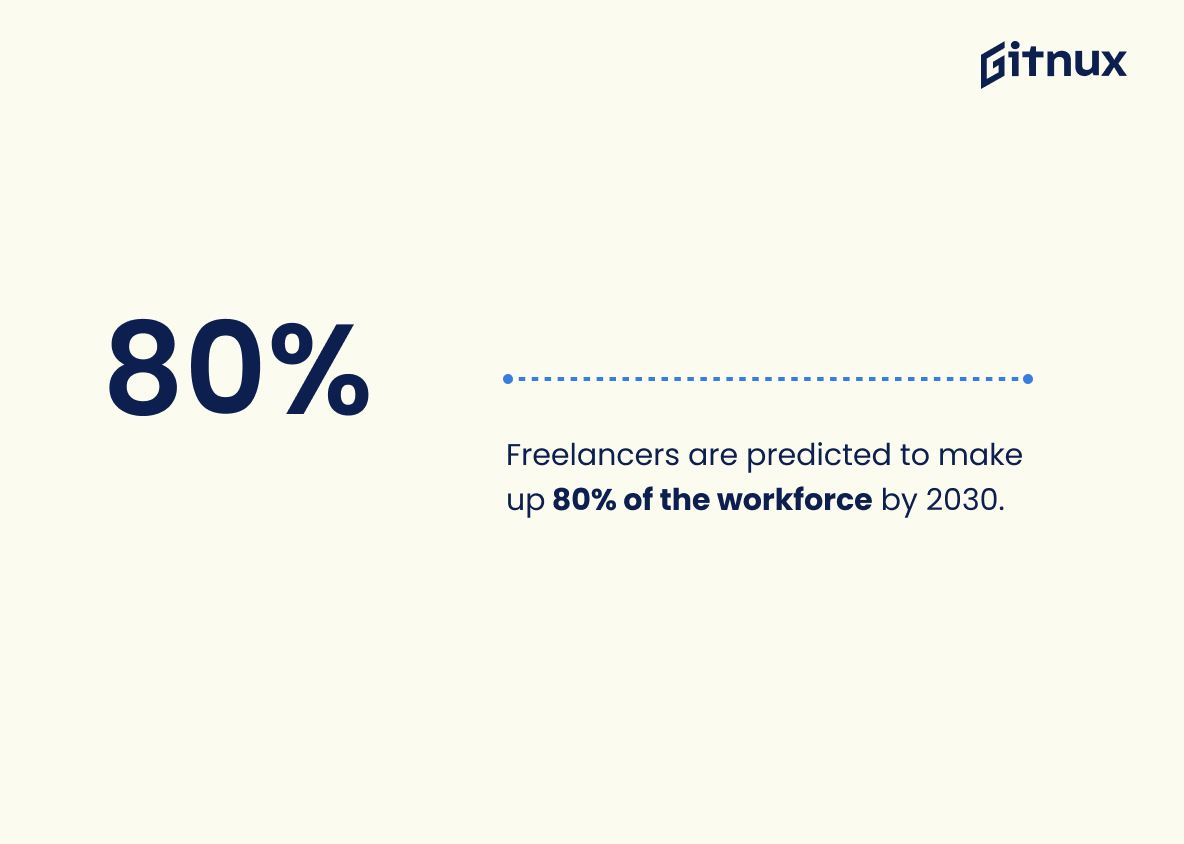The future of work is an ever-evolving landscape, and the statistics that accompany it are just as dynamic. From automation replacing 800 million jobs by 2030 to Generation Z comprising 27% of the workforce in 2025, there’s no denying that our working world will look drastically different over the next decade.
In this market data report, we’ll explore key statistics about how technology and changing demographics will shape our workplaces in years to come.
This statistic is a stark reminder of the ever-changing nature of the workplace. It highlights the need for individuals to stay ahead of the curve and be prepared for the jobs of the future. It also serves as a warning to employers to be proactive in anticipating the skills and roles that will be needed in the coming years. This statistic is a powerful reminder that the future of work is unpredictable and that staying ahead of the curve is essential for success.
By 2025, 70% of the global workforce will work remotely at least five days a month.
This statistic is a telling indication of the changing landscape of the workplace. It speaks to the increasing prevalence of remote work, and the potential for a more flexible and distributed workforce in the future. It is an important statistic to consider when discussing the future of work, as it highlights the potential for a more decentralized and globalized workforce.
Future Of Work Statistics Overview
Automation could replace 800 million jobs across the world by 2030.
This statistic is a stark reminder of the potential impact automation could have on the global workforce in the coming decade. It serves as a warning to those who are unprepared for the changes that are likely to come, and highlights the need for proactive measures to ensure that the transition to a more automated future is managed responsibly.
50% of the United States workforce holds a job that is compatible with at least partial remote work.
This statistic is a powerful indicator of the potential for the future of work. It suggests that half of the US workforce is already equipped to work remotely, which could be a major factor in the shift towards more flexible and distributed work environments. This statistic is a clear sign that the future of work is already here, and that businesses should be prepared to embrace the changes that come with it.
65% of today’s students will work in roles that don’t exist yet.
This statistic is a stark reminder of the ever-evolving nature of the workplace. It highlights the need for students to stay ahead of the curve and be prepared for the jobs of the future. It also serves as a warning to employers to stay abreast of the latest trends and technologies in order to remain competitive. Ultimately, this statistic speaks to the importance of staying informed and adapting to the changing landscape of the workplace.
By 2025, Generation Z will comprise 27% of the workforce.
This statistic is a crucial indicator of the changing landscape of the workforce. By 2025, Generation Z will make up a significant portion of the workforce, and it is important to understand the implications of this shift. This statistic can help employers and businesses plan for the future of their workforce and ensure that they are prepared to meet the needs of this new generation of workers. Additionally, this statistic can help inform discussions about the future of work and the potential impact of generational differences on the workplace.
Between 2021 and 2025, 75 million to 375 million workers worldwide will need to change occupations due to automation.
This statistic is a stark reminder of the potential impact of automation on the global workforce. It highlights the need for workers to be prepared for the changing job market and to be equipped with the skills necessary to transition into new occupations. It also serves as a warning to employers to be mindful of the potential disruption automation could cause to their workforce and to plan accordingly.
Artificial Intelligence could boost labor productivity globally by 40% by 2030.
This statistic is a powerful indicator of the potential of Artificial Intelligence to revolutionize the way we work. By 2030, AI could be a major driver of increased labor productivity, allowing businesses to do more with less and increase their bottom line. This could have a major impact on the future of work, as businesses look to AI to help them stay competitive and maximize their efficiency.
By 2022, 54% of all employees will require significant upskilling and reskilling.
This statistic is a stark reminder of the need for businesses to stay ahead of the curve when it comes to the Future of Work. With the rapid pace of technological advancement, it is essential that companies invest in upskilling and reskilling their employees to ensure they remain competitive in the ever-changing job market. Without this investment, businesses risk falling behind and being unable to keep up with the demands of the future.
The global freelancing economy is expected to grow to $20-30 billion by 2025.
This statistic is a testament to the growing importance of freelancing in the future of work. It shows that freelancing is becoming an increasingly viable option for those looking to make a living, and that the industry is expected to continue to expand in the coming years. This is an important statistic to consider when discussing the future of work, as it highlights the potential for freelancing to become a major part of the global economy.
By 2025, the Internet of Things (IoT) will generate $6-11 trillion in global economic value.
This statistic is a powerful indicator of the potential of the Internet of Things (IoT) to revolutionize the future of work. It demonstrates the immense economic value that can be generated by leveraging the power of connected devices and data to create new opportunities and efficiencies. This statistic is a clear sign that the future of work will be heavily influenced by the IoT, and businesses should be prepared to capitalize on this potential.
68% of employers say talent shortages have increased the time it takes to fill positions.
This statistic speaks volumes about the current state of the job market. It highlights the fact that employers are struggling to find the right talent to fill positions, leading to longer wait times for job openings to be filled. This is indicative of a larger trend in the Future of Work, where the demand for skilled workers is outpacing the supply. As a result, employers are having to look for more creative ways to find the right talent, such as through remote work or upskilling existing employees. This statistic is a reminder of the importance of staying ahead of the curve when it comes to the Future of Work.
By the early 2030s, up to 20% of the global workforce could be affected by the adoption of AI and automation technologies.
This statistic is a stark reminder of the potential impact of AI and automation technologies on the global workforce. It highlights the need for businesses and governments to take proactive steps to ensure that workers are not left behind in the transition to a more automated future. It also serves as a warning to those who may be complacent about the potential effects of these technologies, and the need to prepare for the changes that are coming.
By 2030, demand for social and emotional skills will grow by 26% in the United States and 22% in Europe.
This statistic is a powerful indicator of the changing landscape of the workplace. As technology continues to evolve, the need for social and emotional skills is becoming increasingly important. This statistic highlights the growing demand for these skills, which will be essential for workers to succeed in the future of work. It is a reminder that employers must prioritize the development of these skills in order to remain competitive and ensure their employees are prepared for the future.
Companies using AI for sales can increase their leads by 50%.
This statistic is a powerful indicator of the potential of AI in the workplace. It shows that companies who embrace AI for sales can expect to see a significant boost in their leads, which could lead to increased revenue and growth. This is an important statistic to consider when discussing the future of work, as it demonstrates the potential of AI to revolutionize the way businesses operate.
Freelancers are predicted to make up 80% of the workforce by 2030.
This statistic is a powerful indicator of the changing landscape of the workforce. By 2030, freelancers are expected to make up the majority of the workforce, which speaks to the increasing prevalence of flexible, remote work opportunities. This shift in the way people work has the potential to revolutionize the way businesses operate, and it’s important to understand the implications of this statistic in order to prepare for the future of work.
Conclusion
The future of work is rapidly changing, with new technologies and trends emerging every day. Statistics show that 85% of the jobs that will exist in 2030 have yet to be invented, 70% of the global workforce will work remotely at least five days a month by 2025, automation could replace 800 million jobs across the world by 2030, 50% of the United States workforce holds a job compatible with partial remote work today, 65% of students are expected to enter roles not currently existing when they join the workforce and 27% will come from Generation Z.
Additionally 75 million to 375 million workers worldwide may need to change occupations due to automation between 2021-2025 while 81 percent businesses claim their employees’ mental health is a priority for them in this transition period. Furthermore 1 in 4 workers expect look for new employment opportunities next year and AI can boost labor productivity globally up 40%. The freelancing economy is also growing exponentially as it’s predicted reach $20-30 billion by 2025 while IoT has potential generate $6-11 trillion economic value over same time frame.
References
0. – https://www.delltechnologies.com
1. – https://www.slideshare.net
2. – https://www..deloitte.com
3. – https://www.emarketer.com
4. – https://www.go.manpowergroup.com
5. – https://www.money.cnn.com
6. – https://www.globalworkplaceanalytics.com
7. – https://www.hbr.org
8. – https://www.mathspace.co
9. – https://www.weforum.org
10. – https://www.pwc.co.uk
11. – https://www.mckinsey.com
12. – https://www.pwc.com
ZipDo, cited June 2023: Future Of Work Statistics
